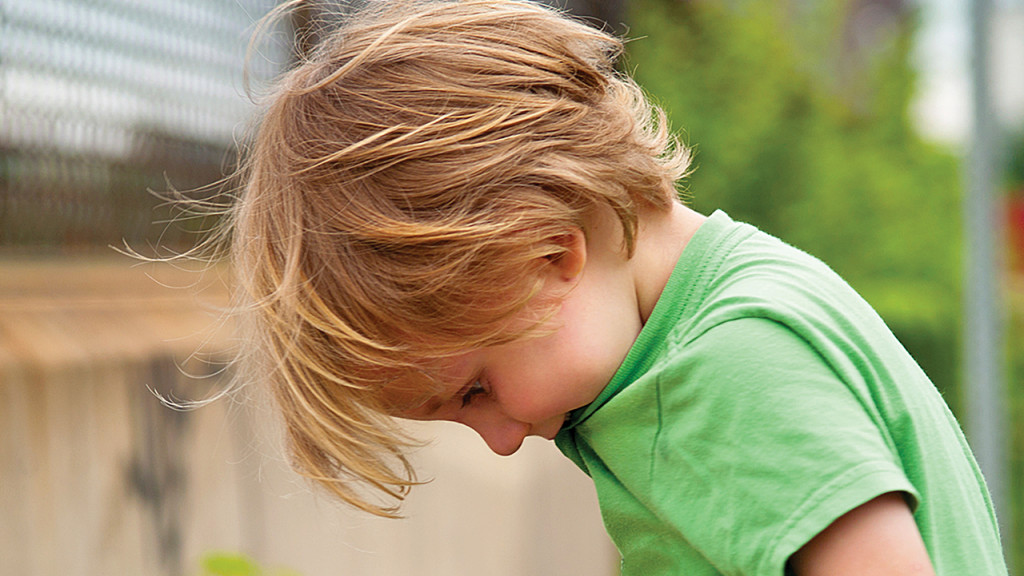Photo: iStockphoto
After five kids, Sharon Fernandes* thought she’d seen it all. But the Pickering, Ont., mom has never seen a child explore the world with their mouth like her four-year-old son, Brady.* Pencils, Play-Doh, Silly Putty, doorknobs and even commuter train windows are among the many things he has sucked, chewed or licked.
“He will suck on markers, caps off, and he even likes to colour his teeth,” says Fernandes. “I know he can be a daredevil and he’s super curious, but I worry that he’s reckless. At some point, it can’t be a normal thing.”
We expect kids who are two and under to use their mouths to help them learn or calm down—it’s called oral sensory input. But the majority of children outgrow this behaviour by age three.
While you may have heard the Freudian term “oral fixation” before, it’s not a label Meghan Prouse, a paediatric occupational therapist in Ottawa-Gatineau, likes to use. “I see it more as a kiddo who’s trying to regulate their body by seeking oral-sensory input,” she says. “Children might chew or suck on things to calm their bodies when they are overstimulated or overwhelmed,” she explains. Some kids use chewing to help them focus. Fingers, toys, collars, sleeves, rocks and tennis balls are among the items she’s seen kids mouth.

How to handle teeth grinding in toddlersBeyond age three, according to Prouse, children typically explore primarily with their hands. But remember that we all use oral stimulation to a certain extent—even adults chew gum.
David Stevenson, a family dentist in Carleton Place, Ont., and president of the Ontario Dental Association, says this kind of extended oral compulsion is incredibly common. “Almost every little kid goes through this phase,” he says. But some kids need more help than others in getting over it.
“Up to age three, let it ride,” Stevenson says. Soothers, thumbs and other objects provide legitimate comfort for children under three. With a four- or five-year-old, he recommends passively trying to steer them away from the habit (using distractions or simple reminders) without making them feel guilty. Stevenson says that from a dental standpoint, there’s no need to take a more active approach until the adult teeth start to come in around age six.
Like Fernandes, I, too, have dealt with a kid who preferred to explore the world by popping everything into her mouth. My middle child is the reason the poison control number was taped to our fridge for years. (PSA: Those silica packets that say “Throw away. Do not eat” are relatively benign, as I was relieved to learn after one frantic call.) I clearly remember a visit to the park one spring, the same year my daughter was to start kindergarten: She headed straight to the sandbox and scooped a big handful of wet sludge right into her mouth. Again with the sand?! I thought. Isn’t she too old for this? Maybe I should talk to someone.
There are signs parents can look for when deciding whether it’s time to seek professional help or something they can simply wait out, Prouse says. “If you notice your child has anxiety or other sensory concerns, if it’s really impacting them socially or emotionally, if they’re getting teased or if it’s affecting their ability to participate in activities, then it might be something to get checked out,” she says.
The first step is to figure out when and why a kid is putting things in their mouth. Does oral stimulation help them cope with stress or anxiety? They might be overwhelmed by a loud or chaotic environment, or simply tired. Prouse says parents understand their children best and they need to work with professionals to develop a treatment plan.
There’s no one-size-fits-all solution for children with oral compulsions. Occupational therapists like Prouse work with kids to provide safer, more appropriate outlets for sensory processing, which can include things like crunchy or chewy snacks, special pencil toppers, or zipper pulls or necklaces designed for chewing (sometimes marketed as “chewelry”). In some cases, they might also refer families to a psychologist or speech therapist. (Oral compulsions can affect the development of the speech muscles in the tongue, jaw and lips.) Begin with a visit to your family doctor to rule out medical concerns and ask about a referral for occupational therapy (sometimes covered by employer health benefits).
Fernandes is on the right path. She’s already taking Brady to a speech therapist and she’s working with his daycare to keep an eye on his oral impulses before he starts kindergarten.
Fortunately, I no longer need to keep the poison control number on hand. By grade one, my daughter outgrew, on her own, the need to stick everything in her mouth. But know that your child is not the only one sucking on random household items—and help is out there if you need it.
* Names have been changed.
Read more:
When is thumb-sucking a problem?
Stuttering: How to support your child


